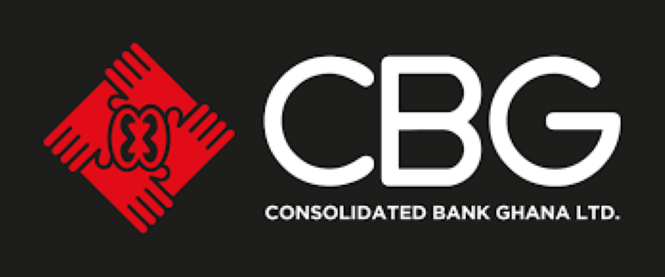
There’s no mystery about exercise: You get out of it what you put in. But you don’t have to work out for hours each day. You just need to work smart.
Not all exercises are created equal. Some are more efficient than others, whether they target multiple muscle groups, are OK for various fitness levels, or help you burn calories more effectively.
So what are the best exercises? We posed this question to four fitness experts and compiled a list of their favorites.
1. Walking
Any exercise program should include cardiovascular exercise, which strengthens the heart and burns calories. And walking is something that most people can do anywhere, anytime, with no equipment other than a good pair of shoes.
It’s not just for beginners, either: Even the very fit can get a good workout from walking.
“Doing a brisk walk can burn up to 500 calories per hour,” says Robert Gotlin, DO, director of orthopaedic and sports rehabilitation at Beth Israel Medical Center in New York. Since it takes 3,500 calories to lose a pound, you could expect to lose a pound for every seven hours you walk, if you did nothing else.
Don’t go from the sofa to walking an hour day, though. beginners should start by walking five to -10 minutes at a time, gradually moving up to at least 30 minutes per session, says Richard Cotton, a spokesman for the American Council on Exercise.
“Don’t add more than 5 minutes at a time,” he says. Another tip: As you get fitter, it’s better to add more time to your walk before boosting your speed or cranking up the incline on your treadmill.
2. Interval training
Whether you’re a beginner or have exercised for years, adding interval training to your cardiovascular workout will boost your fitness level and may help you lose weight.
“Varying your pace throughout the exercise session stimulates the aerobic system to adapt,” Cotton says. “The more power the aerobic system has, the more capacity you have to burn calories.”
The way to do it is to push the intensity or pace for a minute or two, then back off for anywhere from two to -10 minutes (depending on how long your total workout will be, and how much time you need to recover). Continue doing this throughout the workout. Ask a trainer what an appropriate interval is for you.
3. Squats
Strength training is also essential. “The more muscular fitness you have,” says Cotton, “the greater the capacity you have to burn calories.”
The experts interviewed for this story tended to favor strength-training exercises that target multiple muscle groups. Squats, which work the quadriceps, hamstrings, and gluteals, are an excellent example. “They give you the best bang for the buck because they use the most muscle groups at once,” says trainer David Petersen of Oldsmar, FL.
Good form is key. “What makes an exercise functional is how you perform the exercise,” Petersen says. “If you have bad technique, it’s no longer functional.”
For squats, keep your feet shoulder-width apart and your back straight. Bend your knees and lower your rear. “The knee should remain over the ankle as much as possible,” Cotton says.
4. Lunges
Like squats, lunges work all the major muscles of the lower body: gluteals, quadriceps, and hamstrings.
A lunge is a great exercise because it mimics walking, only exaggerated, Petersen says.
Lunges are a bit more advanced than squats, helping to improve your balance as well, Cotton notes.
Here’s how to do them right: Take a big step forward, keeping your spine in a neutral position. Bend your front knee to approximately 90 degrees, focusing on keeping weight on the back toes and dropping the knee of your back leg toward the floor.
Petersen suggests that you imagine sitting on your back foot. “The trailing leg is the one you need to sit down on,” he says.
To make a lunge even more functional, Rufa recommends trying to step not just forward, but back and out to each side.
“Life is not linear, it’s multiplanar,” Rufa says. And the better they prepare you for the various positions you’ll move in during the course of a day, the more useful exercises are.
5. Push-ups
If done correctly, the push-up can strengthen the chest, shoulders, triceps, and even the core trunk muscles, all at one time.
Push-ups can be done at any level of fitness/ “For someone who is at a more beginning level, start by pushing from the kitchen-counter height,” Cotton says. “Then work your way to a desk, a chair, the floor with bent knees, and, finally, the floor on your toes.”
Here’s how to do a push-up: From a face-down position, place your hands slightly wider than shoulder-width apart. Place your toes or knees on the floor, and try to create a perfect diagonal with your body, from the shoulders to the knees or feet. Keep the glutes [rear-end muscles] and abdominals engaged. Then lower and lift your body by bending and straightening your elbows, keeping your torso stable throughout.
There are ways to make it harder. Once your form is perfect, try what Rufa calls the “T-stabilization” push-up: Get into push-up position, then do your push-ups with one arm raised out to the side, balancing on the remaining three limbs without rotating your hips.
6. Abdominal Crunches
When done correctly, the familiar crunch (along with its variations) is a good choice to target your ab muscles.
For a standard crunch, says Cotton, begin lying on your back with feet flat on the floor and fingertips supporting your head. Press your low back down and begin the exercise by contracting abdominals and peeling first your head (tucking your chin slightly), then your neck, shoulders, and upper back off the floor.
Be careful not to pull your neck forward by sticking the chin out; don’t hold your breath, and keep elbows out of your line of vision to keep chest and shoulders open.
Petersen teaches his clients to do crunches with their feet off the floor and knees bent. He says that with feet kept on the floor, many people tend to arch the back and engage the hip flexors.
7. Bent-over Row
This exercise works all the major muscles of the upper back, as well as the biceps.
Here’s how to do it with good form. Stand with feet shoulder-width apart, then bend knees and flex forward at the hips. (If you have trouble doing this exercise standing up, support your weight by sitting on an incline bench, facing backward.) Tilt your pelvis slightly forward, engage the abdominals, and extend your upper spine to add support.
Hold dumbbells or barbell beneath the shoulders with hands about shoulder-width apart. Flex your elbows, and lift both hands toward the sides of your body. Pause, then slowly lower hands to the starting position. (Beginners should do the move without weights.)
Source: webmd.com
The post Seven Most Effective Exercises appeared first on The Ghanaian Chronicle.
Read Full Story













Facebook
Twitter
Pinterest
Instagram
Google+
YouTube
LinkedIn
RSS